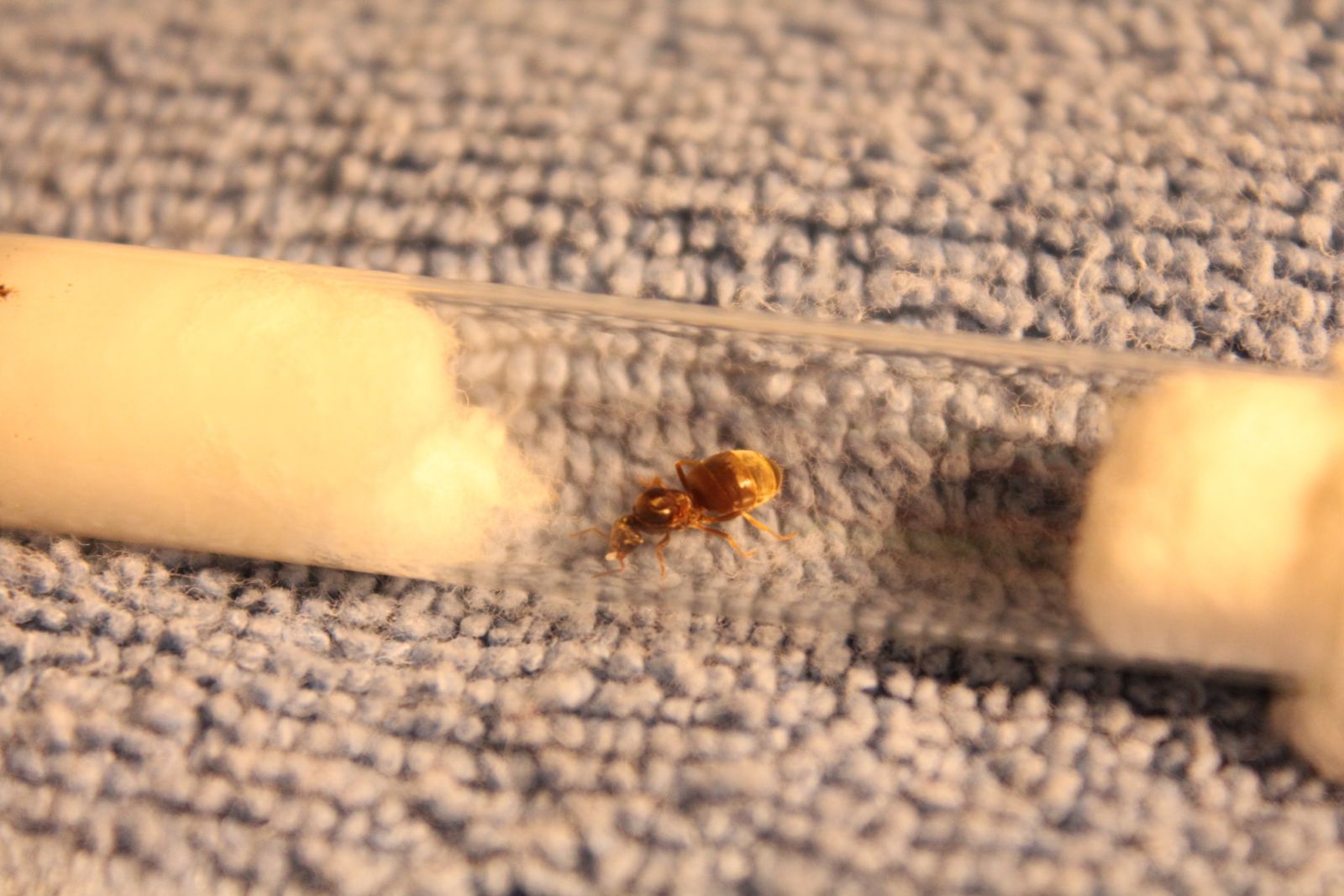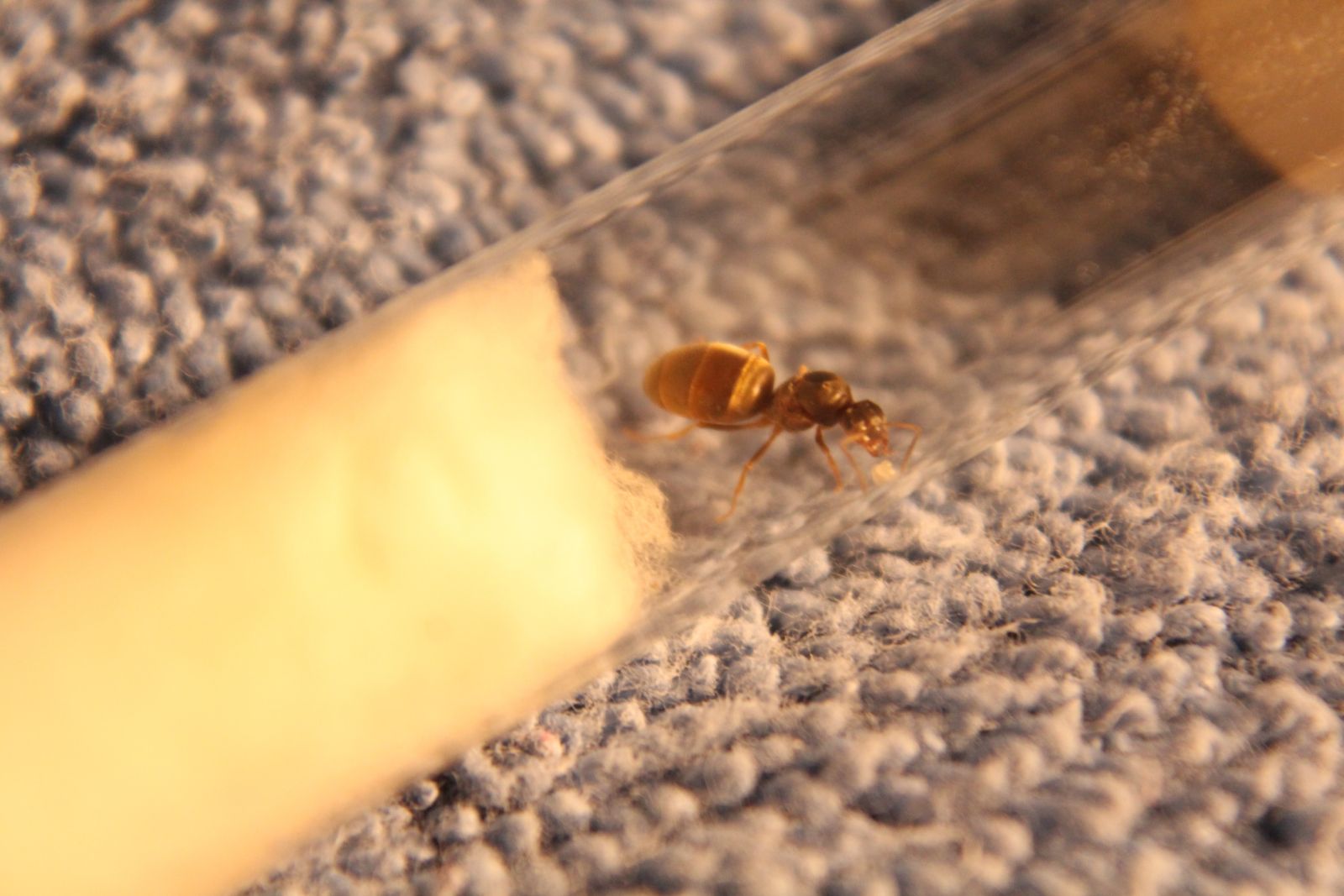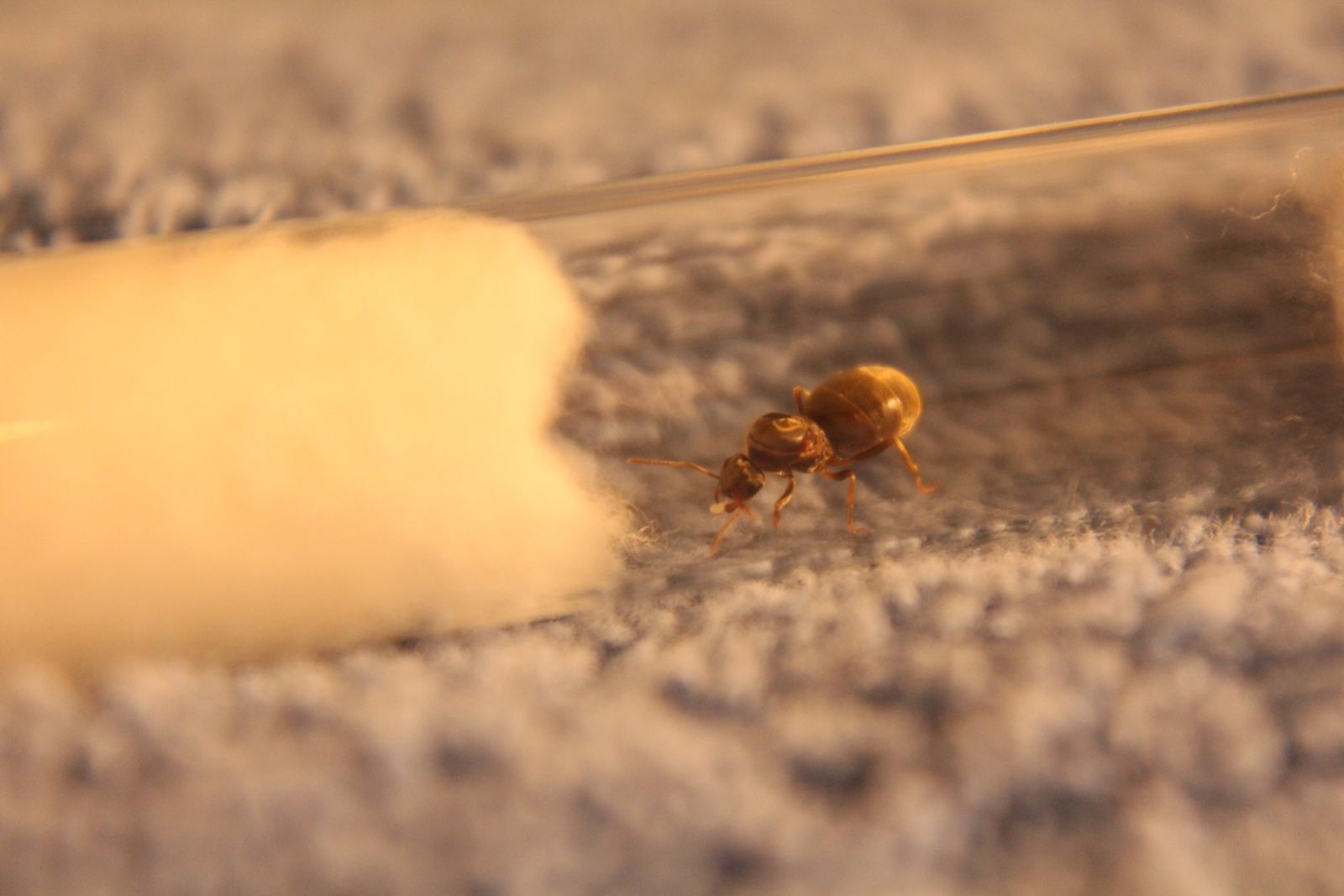- Formiculture.com
- Forums
- Gallery
- Members
- Member Map
- Chat

Detroit, MI 8/16/16 (Potentially Two Different Species)
Started By
SaintDrake
, Aug 16 2016 5:36 PM
10 replies to this topic
#1
 Offline
-
Posted August 16 2016 - 5:36 PM
Offline
-
Posted August 16 2016 - 5:36 PM
So yesterday, I decided I wanted to start an ant farm and dug up and ant nest and stole the queen and some workers.
Today, I go outside after dinner with my parents and low and behold it is antocalypse. I caught some queens after they pulled their wings off (I watched a few do it which was awesome!).
Anyways time for the details. I think there are two separate species so i will answer each question twice for species A and B.
1A and B. Detroit Michigan. They were waking on the sidewalk or flying in the air.
2A and B. 8/16/16
3A and B. Urban neighborhood.
4A and B. Approximately 12mm.
5A. Red orange head, darker brick read thorax, red orange abdomen.
5B. Blackish brown head and thorax, lighter brown abdomen.
6A. Abdomen longer and thinner than species B.
6B. Abdomen shorter and thicker than species A and appears slightly fuzzy.
I don't really know what to say for 7. Also they were not in nests so I can't answer 8.
9A. https://imgur.com/a/gZKYn
9B. https://imgur.com/a/R362M
Today, I go outside after dinner with my parents and low and behold it is antocalypse. I caught some queens after they pulled their wings off (I watched a few do it which was awesome!).
Anyways time for the details. I think there are two separate species so i will answer each question twice for species A and B.
1A and B. Detroit Michigan. They were waking on the sidewalk or flying in the air.
2A and B. 8/16/16
3A and B. Urban neighborhood.
4A and B. Approximately 12mm.
5A. Red orange head, darker brick read thorax, red orange abdomen.
5B. Blackish brown head and thorax, lighter brown abdomen.
6A. Abdomen longer and thinner than species B.
6B. Abdomen shorter and thicker than species A and appears slightly fuzzy.
I don't really know what to say for 7. Also they were not in nests so I can't answer 8.
9A. https://imgur.com/a/gZKYn
9B. https://imgur.com/a/R362M
#2
 Offline
-
Posted August 16 2016 - 6:58 PM
Offline
-
Posted August 16 2016 - 6:58 PM
Impatient for an ant colony? I've been there haha. The first looks like Lasius (Acanthomyops) latipes, which is a social parasite that will need host workers. The second is possibly Lasius neoniger? I'm not the best at Lasius spp.
Current Species:
Camponotus fragilis
Novomessor cockerelli
Pogonomyrmex montanus
Pogonomyrmex rugosus
Manica bradleyi
#3
 Offline
-
Posted August 16 2016 - 7:19 PM
Offline
-
Posted August 16 2016 - 7:19 PM
I looked into both species and I think you might be dead on for both! When I tried to key them out myself I got to Lasius too. I just thought maybe the black one was possibly L. umbratus or L. alienus but I am no expert (obviously) so I will assume they're neoniger. Thank you!
#4
 Offline
-
Posted August 16 2016 - 7:29 PM
Offline
-
Posted August 16 2016 - 7:29 PM
I wouldn't rule out Lasius alienus. I'm sure one of the other members who has more experience with Lasius spp. will chime in, but regardless you have some new queens! ![]()
Current Species:
Camponotus fragilis
Novomessor cockerelli
Pogonomyrmex montanus
Pogonomyrmex rugosus
Manica bradleyi
#5
 Offline
-
Posted August 16 2016 - 7:42 PM
Offline
-
Posted August 16 2016 - 7:42 PM
Quick question if you don't mind, or maybe someone else will chime in, but do colonies in captivity eventually produce new queens or alates?
#6
 Offline
-
Posted August 16 2016 - 7:55 PM
Offline
-
Posted August 16 2016 - 7:55 PM
Quick question if you don't mind, or maybe someone else will chime in, but do colonies in captivity eventually produce new queens or alates?
Yes, but it usually takes a few years. The colony has to be fairly large and healthy. There are some strange cases where very small colonies produce alates, but they are rare and not good for the colony. It takes a lot of resources to produce alates and they don't help out like workers do.
Current Species:
Camponotus fragilis
Novomessor cockerelli
Pogonomyrmex montanus
Pogonomyrmex rugosus
Manica bradleyi
#7
 Offline
-
Posted August 16 2016 - 8:05 PM
Offline
-
Posted August 16 2016 - 8:05 PM
Thanks for the information!  !
!
#8
 Offline
-
Posted August 16 2016 - 8:06 PM
Offline
-
Posted August 16 2016 - 8:06 PM
There are a bunch of possibilities for the non-parasitic queen, but Lasius neoniger is a safe guess. We would need images of the head, showing off the teeth on the mandibles and the hairs on the antennal scapes to get a firm idea of which species she is.
I'm excited to see the arrival of Lasius latipes, although this is a difficult social parasite to get started.
http://www.formicult...cial-parasites/
If you've enjoyed using my expertise and identifications, please do not create undue ecological risk by releasing your ants. The environment which we keep our pet insects is alien and oftentimes unsanitary, so ensure that wild populations stay safe by giving your ants the best care you can manage for the rest of their lives, as we must do with any other pet.
Exotic ants are for those who think that vibrant diversity is something you need to pay money to see. It is illegal to transport live ants across state lines.
----
Black lives still matter.
#9
 Offline
-
Posted August 16 2016 - 8:18 PM
Offline
-
Posted August 16 2016 - 8:18 PM
I read that. I caught a few so maybe I will be able to figure out how to keep one alive. But since I am fairly new to this I am just hoping the easier to keep species will live. Here's hoping! Also I don't have a camera (have been using my iPhone camera) but my friend does and he may be able to help me get some better shots of these girls!
#10
 Offline
-
Posted August 17 2016 - 1:33 PM
Offline
-
Posted August 17 2016 - 1:33 PM
I've said this before in a variety of forums (though maybe not here) and will repeat:
Brown Lasius queens found in July and the first half of August in the eastern half of North America are almost certainly L. alienus.
Brown Lasius queens found in very late August through early October in the eastern half of North America are almost certainly L. neoniger.
Now, if we had a really nicely focused view of the long basal segment of the antenna lacking any erect setae (standing hairs), and of the ventral surface of the hind tibia having 2 or fewer erect setae, we could clinch this, but the overall dark color and timing argues for L. alienus.
- kellakk likes this
#11
 Offline
-
Posted August 21 2016 - 7:14 PM
Offline
-
Posted August 21 2016 - 7:14 PM
Do these pictures help in the identification? They are as good as I can get.



Edited by SaintDrake, August 21 2016 - 7:22 PM.
1 user(s) are reading this topic
0 members, 1 guests, 0 anonymous users














